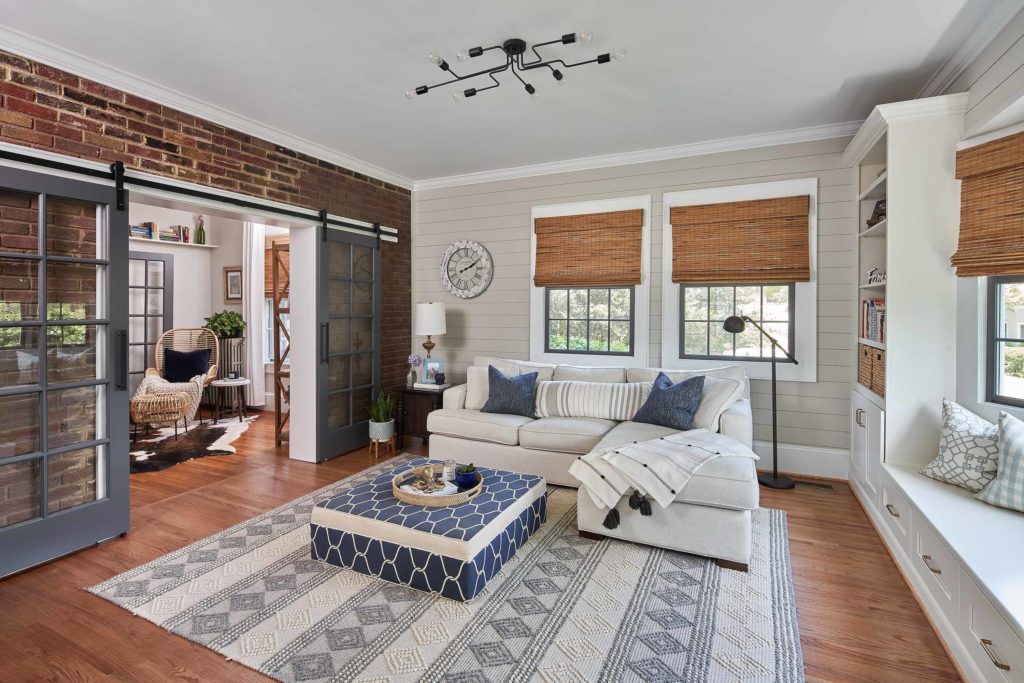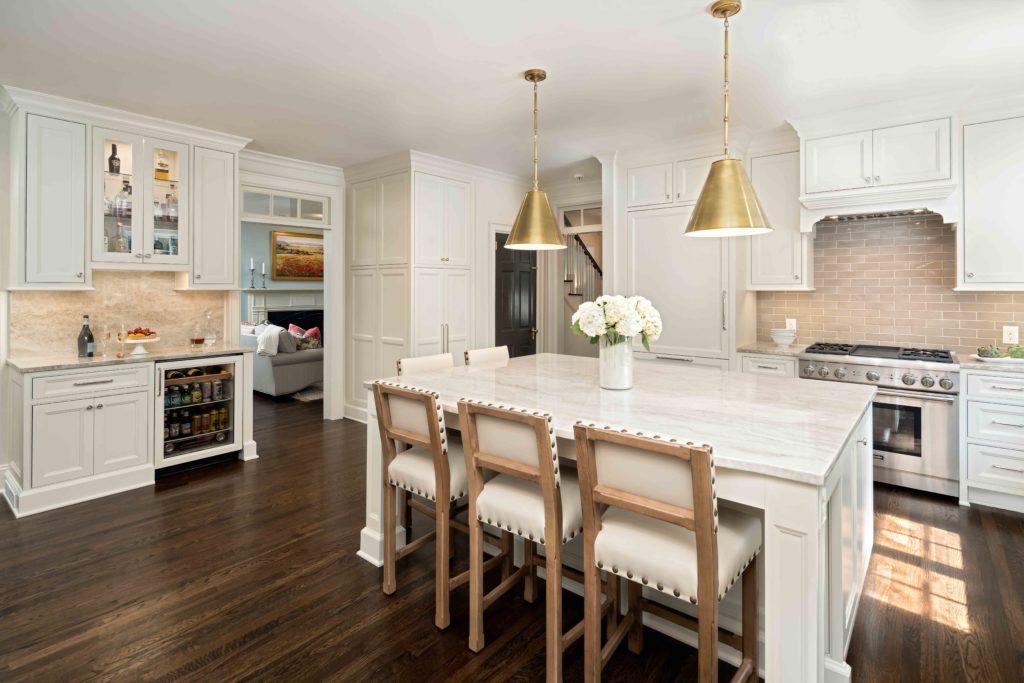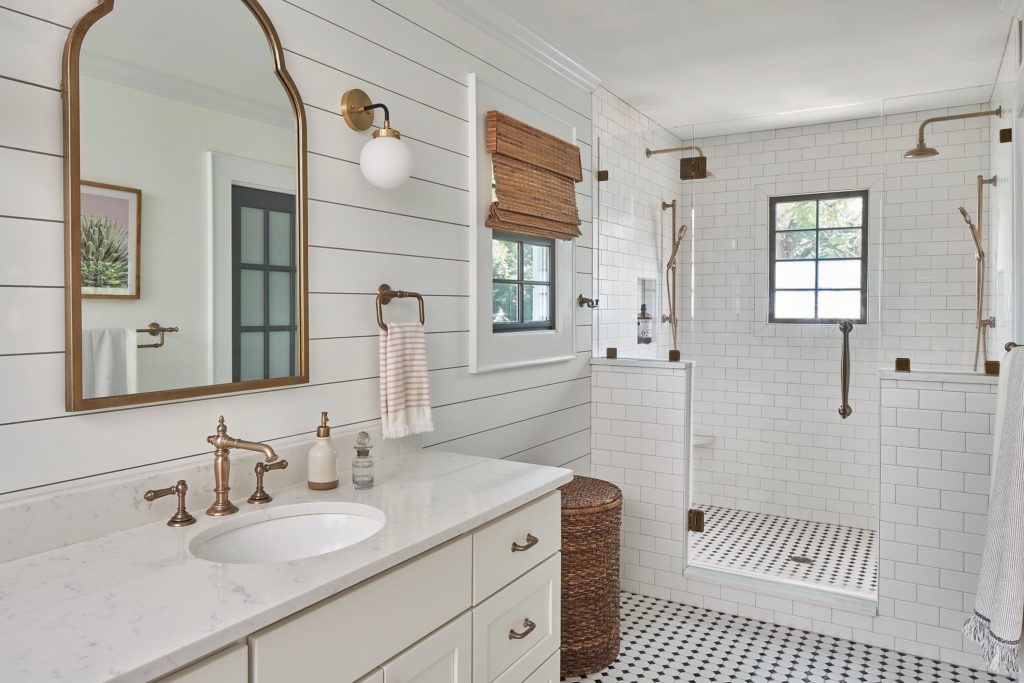How to Preserve Your Charlotte Historic Home’s Charm During a Remodel
Charlotte may, in many ways, look like a brand new city (we’re not the only ones noticing all those skyscrapers taking over Southend). Still, it has a rich history, with roots in the Old South before the American Revolution. After the Civil War, Charlotte began to thrive as a railroad junction and a cotton mill hub. As Charlotte’s oldest streetcar suburb, Dilworth (hello 300 East and Freedom Park) resulted from the arrival of streetcars in Charlotte’s original fourth ward neighborhood. Much of Dilworth’s Historic District is listed on the National Register of Historic Places and includes 1389 buildings. Likewise, another historic Queen city neighborhood, Plaza-Midwood, was established as a streetcar suburb of Charlotte in 1910. While most of Dilworth and Plaza’s homes are in the Bungalow style, you can find some examples of different architectural types in both areas, including Queen Ann, Colonial Revival, Italianate, and Tudor.
Much of the credit goes to the architect Charles Christian (C.C.) Hook, Charlotte’s first regional architect, who introduced the Colonial Revival style in the late 1800s. Hired by Edward Dilworth Latta to design five new-style residences in Queen Anne, Colonial and Modern American styles, he ultimately created 35, becoming one of the most prolific architects in North Carolina at the time.
For more information about Charlotte’s historic homes, take a look at our article, “Charlotte Architectural Styles and What They Mean for Your Home Remodel.” To find out more, we recommend “150 Years of Home Architecture in Charlotte” for its great representations of each type of architectural style.
If you are fortunate enough to own one of Charlotte’s authentic, historic homes in Dilworth, Plaza Midwood, or somewhere near, you should be thrilled – your house has bones. However, with that privilege comes specific responsibilities to preserve the character of your property. If you are considering a renovation, read on to discover how to help your home retain its historic charm and original details.

Before You Begin Your Historic Home Renovation Project:
You should begin by deciding which features you want to retain and which ones you would like to replace while remaining true to the house’s architectural style and the era. Our recommendation is to repair and refinish rather than replace wherever you can.
Do Your Homework
Find out as much as you can about your Charlotte historic home, keeping in mind that, although it originates as a specific architectural style, others may have already renovated and upgraded the home, incorporating a combination of architectural techniques. Do as much research as possible to figure out the house’s original features, and familiarize yourself with the details of the renovations in which previous owners made changes.
Prioritize The Renovation to be Done
Structure
Your house may have structural issues, so at this point, you should decide whether to renovate or replace them. If you need to tear down any part of the original structure, try to salvage at least some of its historic features, such as doors, windows, and floorboards. You might wind up using them elsewhere in the house, adding a “vintage” touch.
Reusing old single pane windows as transoms over interior doors can add charm (and more light, ceiling height permitting) to an older structure when vintage-inspired, modern-day exterior windows are preferred for increased energy efficiency.
Walls
Many homeowners prefer an open floor plan, but before you start knocking down walls, think twice about your home’s original one, which may be one of its most charming features. Our advice? Make sure to live in your home for at least six months to a year before making these sort of big decisions. After all, the open floor plan wasn’t a feature of historic homes and therefore isn’t architecturally appropriate. There are ways to increase traffic flow and the feeling of a more open-plan without trying to make your historic home something that it wasn’t meant to be. Wider cased openings with period appropriate moldings or other architectural details are a prime example.
Kitchen and Bathrooms
You might put these rooms at the top of your renovation list, but, like the walls, be conservative about making alterations you might later regret. For example, consider refinishing an old porcelain tub rather than buying a new one, but definitely swap out old toilets for water saving models. There are many models available in a selection of vintage profiles to compliment the era of your home.
Windows and Floors
Instead of replacing windows, consider repairing them and adding weatherstripping or storm windows to maintain your home’s historical value. Or, invest in period-appropriate modern-day windows that will match the aesthetic of your home, while increasing efficiency. Whenever possible, refinish original wood floors, replacing rotting sections instead of tiling or carpeting over them.
Cabinetry
If your home has original cabinets, you may consider stripping and refinishing rather than replacing them, but the proportions may not be up to current standards (remember 24” tall vanities?). Often, keeping smaller sections, like built-ins flanking a fireplace or a dining room
hutch can give you the charm you love, while enabling you to replace the most functional pieces with new cabinets and functional accessories. With a wide range of construction methods and finishing techniques available, it’s easy to design new cabinetry that looks like it was part of your home all along.

Renovations You Can’t Avoid
Now is the time to think about the upcoming work on your Charlotte historic home. And don’t worry, your landmark home remodel can be accomplished without compromising the integrity of your house’s original details. While renovating older homes is considerably more expensive than remodeling newer homes, it’s important to preserve them as part of our local culture and history.
Foundation
Start by inspecting the foundation, checking for cracks, leaks, and pests. It’s hard to get around doing the necessary repair to avoid future mold and decay.
Plumbing and Electric
Safety should be your priority, so correct hazards such as lead solder in the pipes and old electric wiring first. You also want to eliminate any inefficiencies, which can cause unnecessary utility bills over time. Keep in mind that due to building code requirements, a home remodel will require updates to plumbing and electrical work that may far exceed the immediate scope of work and include spaces or systems that aren’t necessarily on your demo list.
Cooling and Heating
Your vintage home may not have central heating and air conditioning. There are many choices for updating or adding a new system that will accommodate your home’s original details, such as ductless systems and radiant heating. The best way to find the solution for your home is to speak with a dedicated mechanical expert with experience in older homes.
Walls
Original crown molding and trim are exquisite details often lacking in modern homes. Restoring them will significantly contribute to maintaining your home’s original charm. Plaster walls are another common feature of Charlotte’s older homes, and while much more expensive than drywall, will keep your home feeling more authentic if you maintain them.

Modern Materials with Historic Appeal
If you have to replace original features in your Charlotte historic home, an excellent approach for maintaining your home’s charm is to use modern accessories and materials that capture the historical elements of your home’s original interior.
Lighting
Complement your home’s original light fixtures with modern ones with a vintage look. Today there are countless sources for period-appropriate light fixtures available in a wide variety of finishes. Have a vintage light fixture you absolutely love? With a little help from a lighting restoration company, it’s possible to rewire it to meet local building codes.
Flooring
If you cannot salvage the original wood flooring, you have two options. The first, is to ask your remodeling contractor to source hardwoods in the same or similar size as your original boards and have them site finished to maintain the proportions. Thinner boards were much more popular in Charlotte’s historic homes and are luckily, still readily available. The second option is to update that room with new tiles that feature an antique aesthetic. This is a practical choice in mudrooms and laundry rooms that are separate from main living areas.
Fixtures
Choose door fixtures made with vintage materials such as crystal and brass or some latticework. Likewise, you can update your kitchen and bathrooms with modern reproductions, such as a freestanding, clawfoot tub or fireclay farmhouse sink.
Staircases
Try to preserve the look of the original staircase with modern parts designed to look like the originals.
Things to Consider Prior to Renovating
If you’ve bought one of Charlotte’s historic homes, there’s no doubt you have a passion for maintaining the beautiful and varied architectural culture and history of the Queen city. Here are a two more things to keep in mind as you embark on a historic renovation.
Lead Paint
Any home built prior to 1978 requires a lead test regardless of whether or not it’s in a historic district. If your home tests positive for lead it’s important to work with a licensed contractor who is experienced in the process of lead remediation to ensure the safety of you and your family during construction and beyond.
Local Historic District Guidelines
If your home is within the boundary of one of Charlotte’s six local historic districts, it’s important to enlist the help of a remodeling contractor early on. Working with someone who is familiar with the specific guidelines of your district will save you a lot of time in the design phase. Each district has guidelines for what’s required in terms of material specifications and what types of details are permitted or prohibited.
Interior projects such as kitchen or bathroom renovations that don’t interfere with the exterior in any way, don’t require a formal review process, but the HDC sill needs to verify the project before a permit can be issued. A formal commission review can take many months, so projects that do require a formal review should plan well in advance to avoid unexpected delays. When it comes to renovating older homes, patience can really pay off.
Thinking about a historic home remodel in the Charlotte area? Call one of our restoration experts today. ReVision Design/Remodeling of Charlotte, NC, is an award-winning home remodeling and renovation company with an experienced team of designers, project managers, and installers.



